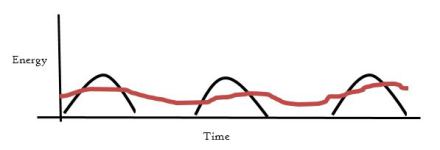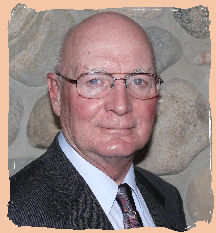 Below is a highly informative presentation given by Dr John Sackett (Idaho National Laboratory, Retired) at the International Conference on Fast Reactors and Related Fuel Cycles (Paris, 2013). John, with a 34-year career in advanced reactor and fuel-cycle development (including work on the Integral Fast Reactor from 1984-1994), provides a clear summary of historical-international experience with fast reactor programmes and initiatives to recycle used fuel.
Below is a highly informative presentation given by Dr John Sackett (Idaho National Laboratory, Retired) at the International Conference on Fast Reactors and Related Fuel Cycles (Paris, 2013). John, with a 34-year career in advanced reactor and fuel-cycle development (including work on the Integral Fast Reactor from 1984-1994), provides a clear summary of historical-international experience with fast reactor programmes and initiatives to recycle used fuel.
This is important information for advocates of ‘Generation IV’ nuclear technologies to understand, because the question of “is it proven to work?” is often asked by the skeptical. Much of this will be familiar to those who have read “Plentiful Energy“, but this is an excellent condensed version of that material. This is also highly relevant in the context of the recently commenced Nuclear Fuel Cycle Royal Commission.
 There is a Long History of Fast Reactor Operation
There is a Long History of Fast Reactor Operation
• The first reactor in the world to produce electricity was a fast reactor, the Experimental Breeder Reactor I in December of 1951.
• International experience with fast reactor technology exists in the US, Russia, France, Japan, UK, Germany and India.
• The operating experience with these reactors has been mixed: early problems were associated with fuel cladding, steam generators, fuel handling, and sodium leakage.
• Excellent experience has been gained, however, that demonstrates the robust nature of the technology, the potential for exceedingly safe designs, ease of maintenance, ease of operation and the ability to effectively manage waste from spent fuel.
• It is a mature technology.
EBR-II was a Major Contributor to the Technology
• EBR-I was followed by EBR-II, which was a complete power plant. It was extremely successful, operating for 30 years and advancing the technology in many ways.
• Principal among its contributions were development of metal and oxide fast-reactor fuel, operational-safety tests which demonstrated the self-protecting nature of fast reactors, and fuel-recycle technology that was efficient and secure.
• Perhaps the most important advance in safety was the demonstration of the self -protecting response of sodium-cooled fast reactors in the event of Anticipated Transients without Scram.
• Tests of Loss of Flow without Scram and Loss-of –Heat-Sink without Scram were conducted at EBR-II from full power with no resulting damage to fuel or systems, ushering in worldwide interest in passively safe reactor design.
International Experience Compliments These Examples
• This experience base is fully supported by a combination of small test reactors that explored all aspects of the technology and larger operating reactors that provided power to the electric grid.
• Small experimental reactors were operated in the US (EBR-II), France (Rapsodie), Russia (BOR-60), Japan (JOYO), UK (DFR), Germany (KNK-II), and India (FBTR).
• Power reactors and larger experimental reactors were operated in the US (FERMI1, FFTF), France (Phenix, Superphenix), Russia (BN350, BN600), Japan (Monju). Current operating Fast Reactors are China (CEFR), and Russia (BN600, BOR60)
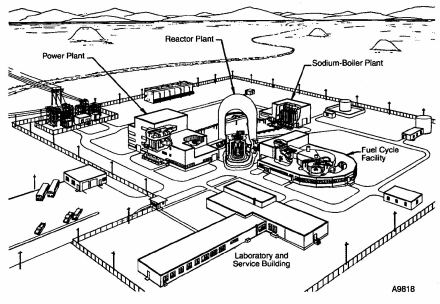 US Experience Followed Two Paths
US Experience Followed Two Paths
• The US carried forward two separate tracks of technology development, primarily associated with the choice of fuel, metal or oxide.
• The first US commercial fast reactor, Fermi-I utilized metal fuel while the Fast-Flux-Test-Facility (FFTF) and the Clinch River Breeder Reactor (CRBR) utilized oxide fuel.
• Due to perceived low burnup potential for metal fuel, (a problem later solved), the U.S. approach turned to oxide fuel in the late 1960s.
• Russia, France, Germany and Japan all follow technology paths that use oxide fuel.
• It is worthwhile expanding this point because diversion of the technology paths has resulted in very different designs and performance, with the result that EBR-II is somewhat unique in this family of reactors.
Dry Reprocessing of EBR-II Fuel was Demonstrated in the 1960s
• Melt Refining was used to recycle fuel for EBR-II from 1964 through 1969
– More than 700 EBR-II fuel assemblies recycled using melt refining and returned to the reactor in four to six weeks
– ~34,000 fuel pins successfully reprocessed, including remote fabrication by injection casting
– Spent fuel was disassembled, chopped, placed into a Zr2O crucible, and heated to 1400 C
– Chemically reactive fission products reacted with the crucible to form oxides
– Uranium and noble metals remained in the metallic state and stayed with the melt to be returned with the re-cast fuel pins
– The fuel was fabricated remotely by injection casting, the resulting equilibrium fuel composition, called fissium, operated through the life of EBR-II. Continue reading →
 SA Nuclear Fuel Cycle Royal Commission – update
SA Nuclear Fuel Cycle Royal Commission – update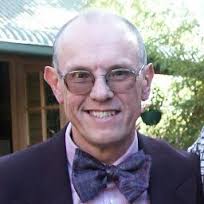 Guest Post by
Guest Post by 
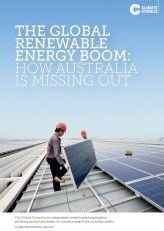

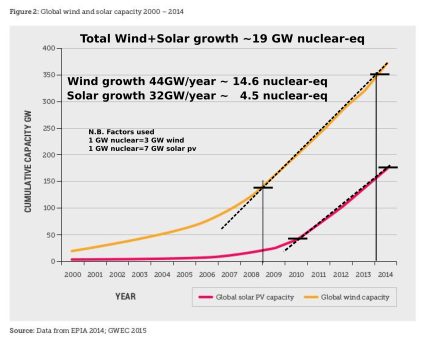



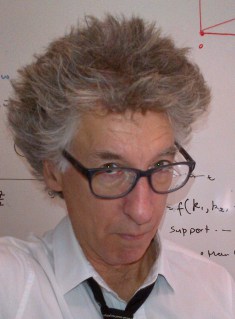 Guest Post by
Guest Post by 
